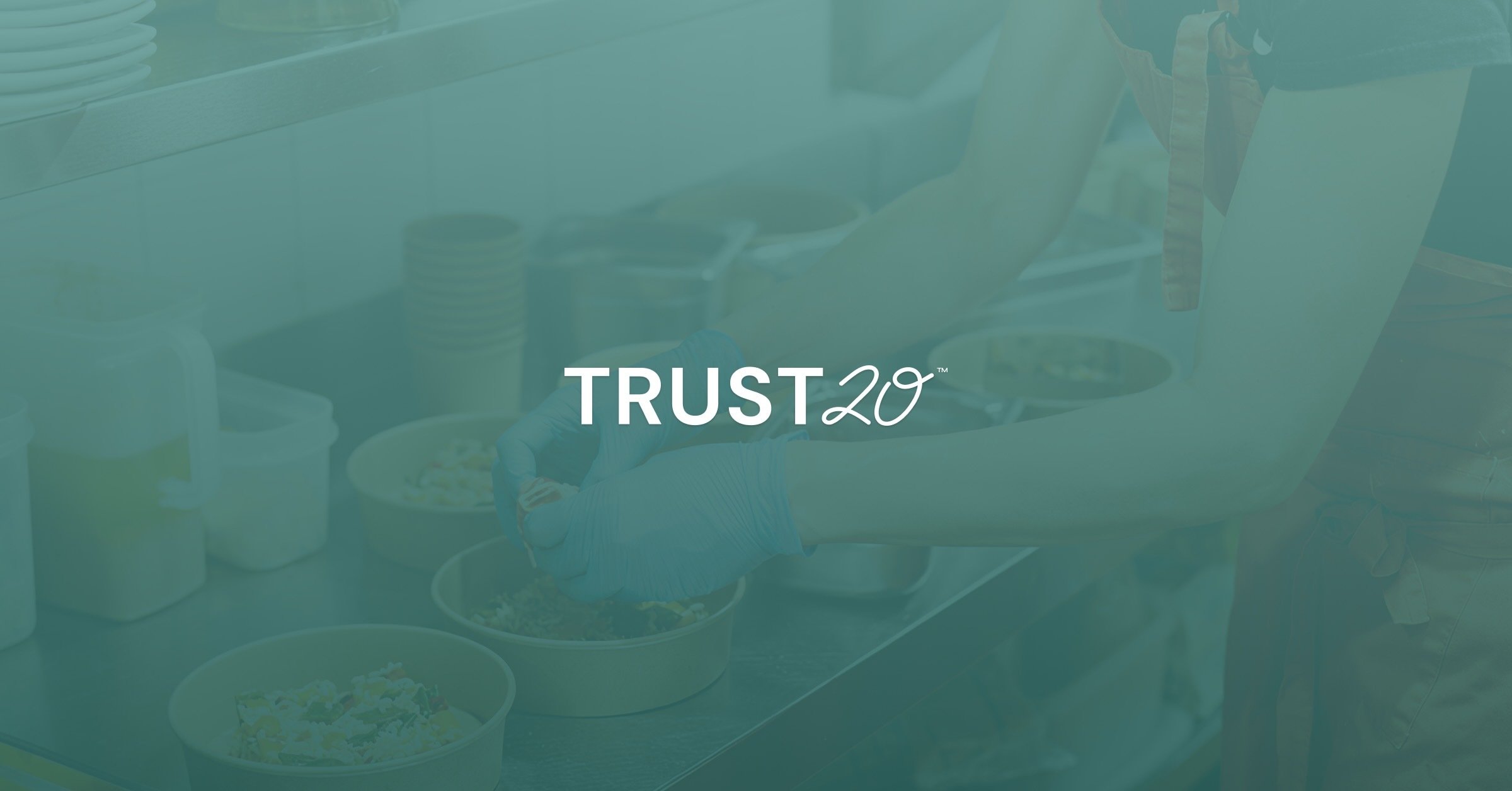Choosing ingredients from safe and healthy food sources is essential if a foodservice business wants to maintain a good reputation–not to mention it is an important part of good health for the everyday consumer! Unfortunately, not all food sources can be trusted, and not all food suppliers properly adhere to recommended safety guidelines.
Knowing how to identify and avoid unsafe food sources can help protect you and your customers from getting sick–and your business from facing the negative consequences of using contaminated ingredients.
Let’s dive a little deeper and discuss why it’s important to be aware of unsafe food sources, how to identify them, and how you can protect yourself and others. Here's a breakdown:
What are the potential risks of unsafe food sources?
How do I identify unsafe food sources?
How do I properly receive food orders?
How do I protect temperature-sensitive foods?
What about tracing food through the supply chain?
How does proper storage keep food safe?
What are the potential risks of unsafe food sources?
Unsafe foods are any foods that contain bacteria or other forms of contamination that can make you ill if consumed. This can be anything from meat or fish that has spoiled to produce that was grown in contaminated soil or water. Bacteria such as salmonella, E. coli, listeria, norovirus, shigella, and hepatitis A can also cause contamination and can cause many serious illnesses. The U.S. Food and Drug Administration (FDA) identifies these contaminants as the “Big 6” most common causes of foodborne illness.
The Centers for Disease Control and Prevention (CDC) estimates that 48 million people are affected by foodborne illness each year.1 It is a common misconception that getting “food poisoning” isn’t a big deal–but thousands of hospitalizations and deaths occur each year. Unsafe foods are particularly dangerous for children and anyone with a weakened immune system.
Not only can you and your customers get sick, but your business's reputation can suffer. There may also be financial and legal consequences. One study revealed that a single outbreak can cost a business millions–sometimes more than it would make in one year!2 Taking preventative measures to avoid these risks and knowing how to spot unsafe food sources can save you and your operation from dealing with some major fallout.
How do I identify unsafe food sources?
There are a few ways to identify potentially unsafe foods before they enter your establishment, but we should first discuss food suppliers. Always purchase foods from reputable suppliers who can provide proof of inspection that complies with local, state, and federal laws. Depending on your local jurisdiction's purchasing guidelines, suppliers may be required to provide a Certificate of Analysis or a Certificate of Conformance.
Don't be afraid to ask your suppliers questions about their business practices–a trustworthy supplier should be prepared for your inquiries, and any defensiveness should be taken as a red flag. You should only use ingredients from trustworthy suppliers because the effort you put into food safety won’t matter if your ingredients have been contaminated before you ever receive them.
How do I properly receive food orders?
Before accepting a food delivery, it is important to inspect the food, the packaging, and the delivery vehicle to ensure that the food was transported under the right conditions. A trained eye for food safety can help avoid receiving unsafe food products. If any food products don’t pass your inspection, don’t accept them because they may be contaminated.
As part of your inspection, you should also examine the packaging of the food items to ensure that it is free of physical damage, that it was sealed properly, and that there are no signs of spillage. You should also scan the delivery vehicle to ensure that there are no signs of a pest infestation.
You should always check the expiration date on packaged food items before using them. Food products past their expiration date should not be consumed because they have most likely begun to spoil and may contain harmful bacteria or fungus inside the package.
How do I protect temperature-sensitive foods?
Temperature-sensitive foods, such as meat, fresh produce, eggs, and dairy products, should be packed in foam or heavy corrugated cardboard during transport, as these materials are good insulators. These foods are known as time-temperature control for safety foods (TCS foods).
If not stored at the right temperature, TCS foods can quickly become unsafe to consume. You should immediately open packages of TCS foods and use a food thermometer to ensure all food items are below 41°F and frozen foods are below 0°F. These foods should be put away quickly using proper storage methods since they can become contaminated in as little as 20 minutes if they reach the temperature danger zone.
Before purchasing temperature-sensitive foods like meat or dairy products, inspect them for signs of rotting. If you notice discoloration or an unpleasant smell, they may have started to spoil. Use your best judgment if something seems off about the product, and remember not to risk it.
What about tracing food through the supply chain?
In addition to already existing food safety requirements, beginning on January 20, 2026, a new rule regarding traceability will be put into effect by the FDA. This new rule falls under the Food Safety Modernization Act (FSMA) and is called the Food Traceability Final Rule (FSMA 204). It applies to the whole food supply chain, including domestic and foreign businesses that produce for U.S. consumption.
This rule will establish further traceability recordkeeping requirements beyond existing regulations for organizations that “manufacture, process, pack, or hold foods” found on the Food Traceability List (FDL).3 The list includes a variety of foods such as cheese, nut butters, fresh herbs, leafy greens, melons, and a variety of finned fish, among others.4 FSMA 204 will require covered persons and organizations to keep records of Key Data Elements that are associated with Critical Tracking Events (CTEs) to faster identify and remove potentially contaminated food.
Quicker identification and removal of contaminated food and ingredients should result in fewer foodborne illnesses. As the compliance date for this new rule approaches, check if this rule applies to you. You might already be meeting some of the requirements, so it’s important to know where you stand under the FMSA 204 and to make adjustments accordingly.
How does proper storage keep food safe?
Something else to be aware of is that all raw meats should be stored separately from other ingredients to prevent cross-contamination between items during preparation and cooking. Cross-contamination occurs when bacteria from one item transfer to another from improper storage methods.
More specifically, the best food storage best practices follow a top-to-bottom layout where the foods with the highest cooking temperatures are stored below foods with lower cooking temperatures. For example, whole fish should be stored above raw meat (which requires a higher cooking temperature) to prevent cross-contamination.
This next bit may seem obvious, but sometimes, overlooking the obvious can result in a food safety fail. It is important to always store food in containers that can be properly sealed to avoid any leaking or spills. For example, if you use ingredients stored next to a container of raw meat that was improperly sealed, those ingredients risk cross-contamination from the raw meat. This type of contamination is particularly dangerous due to bacteria like salmonella, which can spread quickly if left unchecked.
Finally, never store cleaning agents near food, as accidental cross-contamination can make people extremely sick.
The takeaway
Foodservice workers should be able to identify potentially unsafe food sources to help keep customers happy, well-fed, and safe. Simple precautions, such as checking expiration dates, choosing trustworthy suppliers, knowing how to receive food deliveries, and using proper storage methods, will ensure your customers’ safety when selecting foods for consumption.
**Editor's note: This blog was originally posted in March 2023. It has been updated to include additional guidance and information about FSMA 204.
Sources:






.png)

.png)
